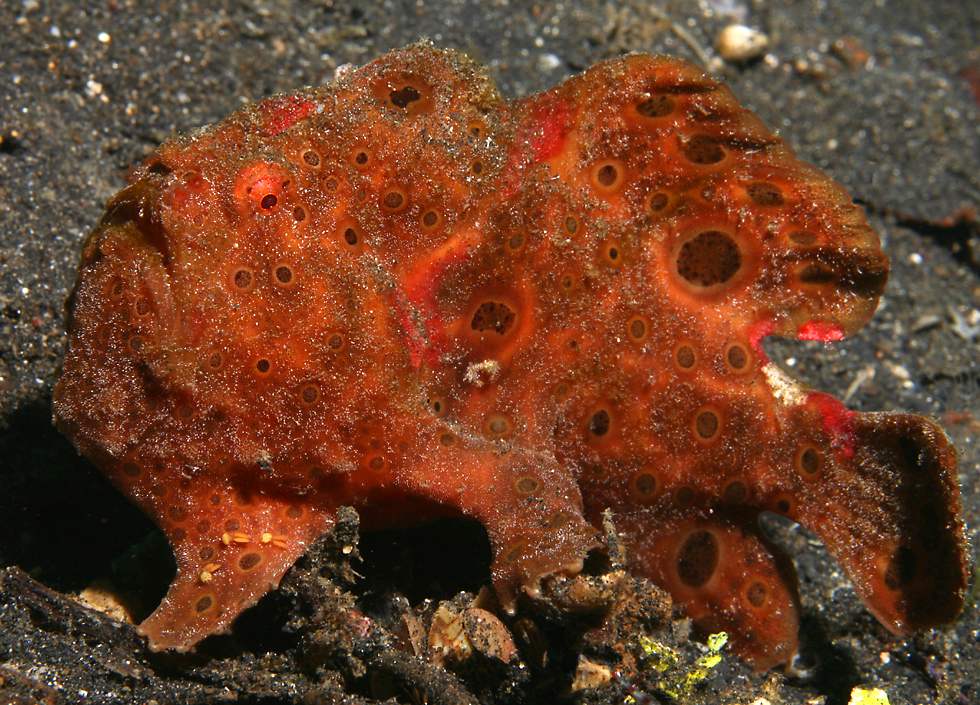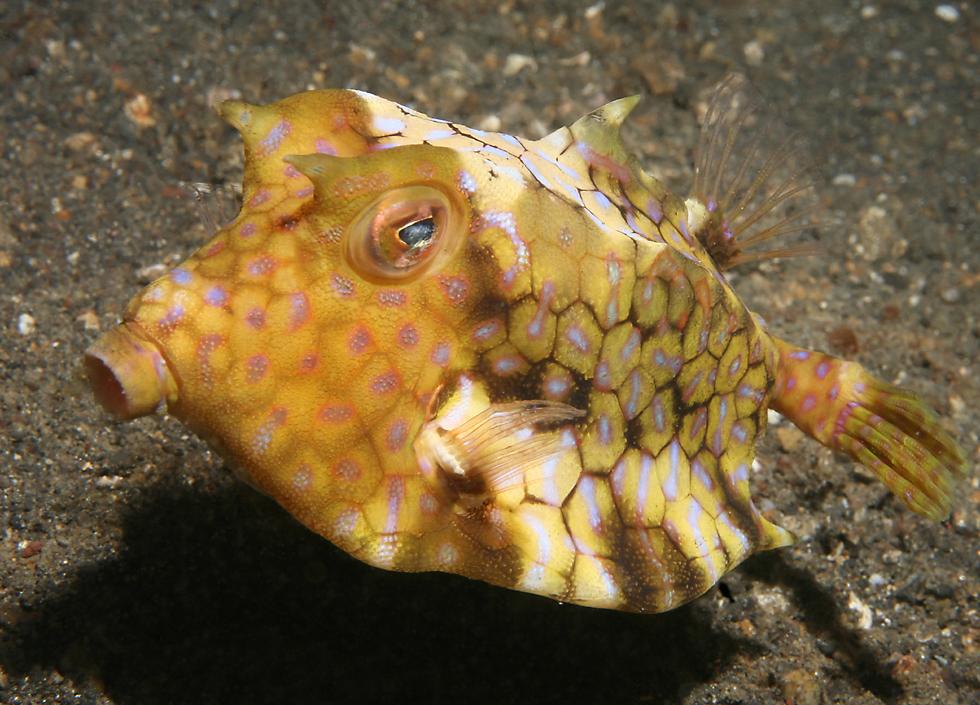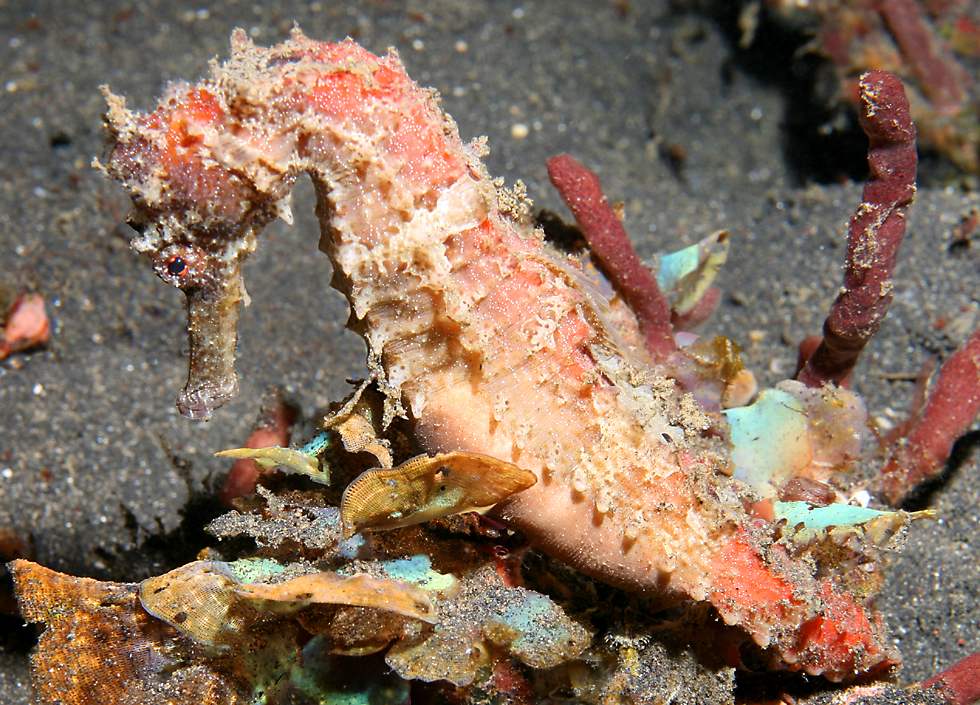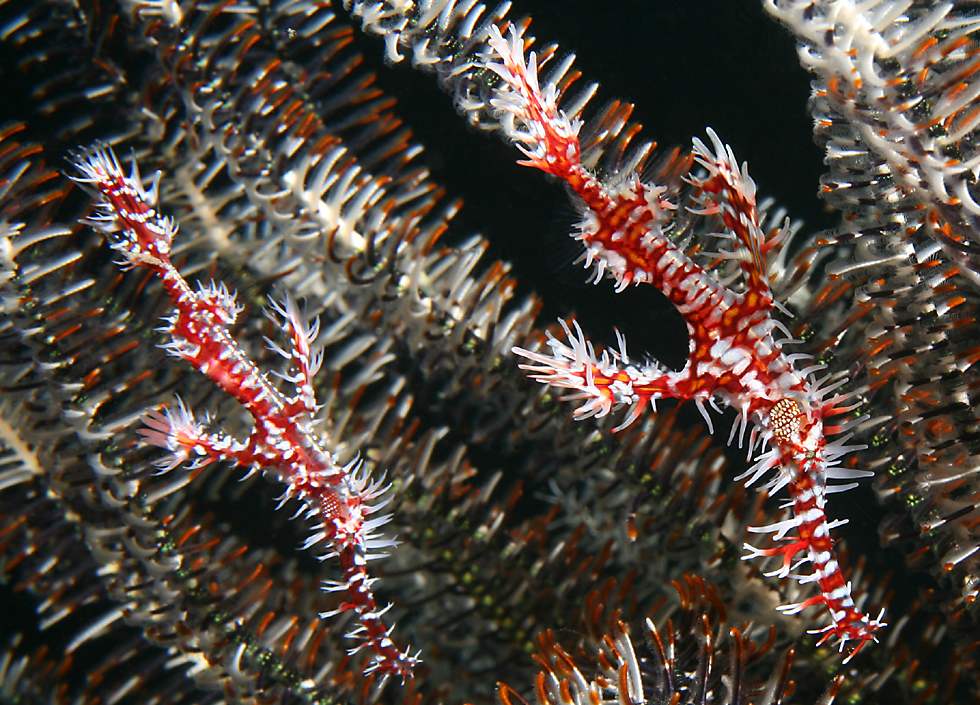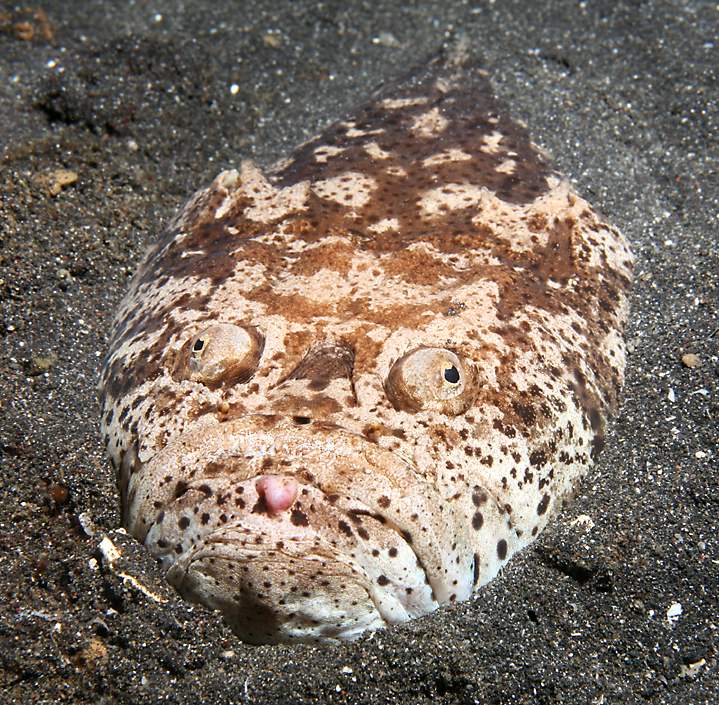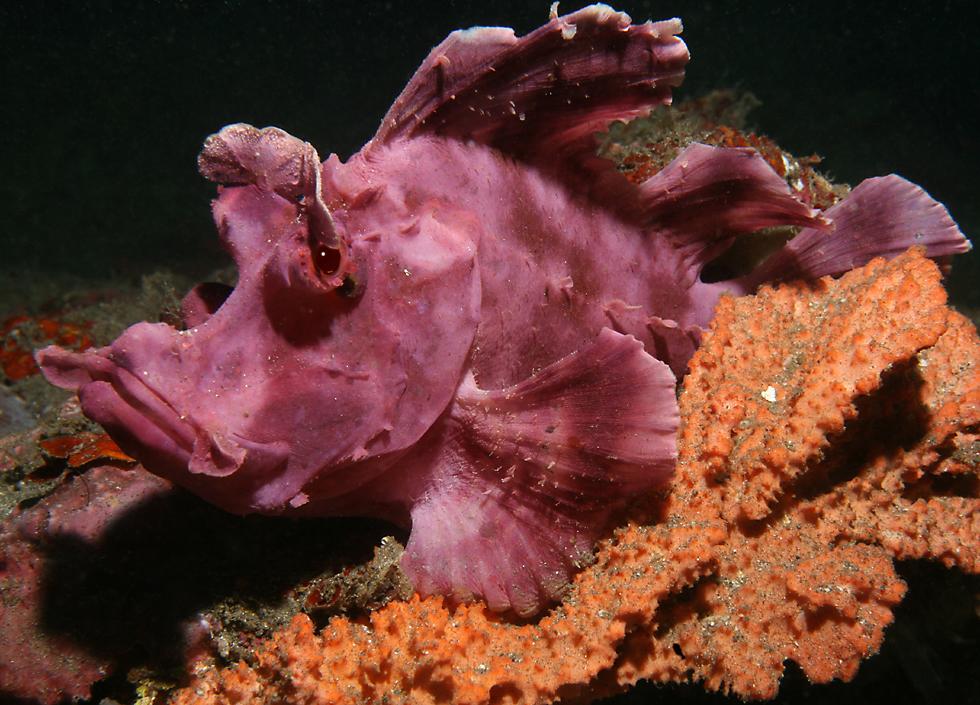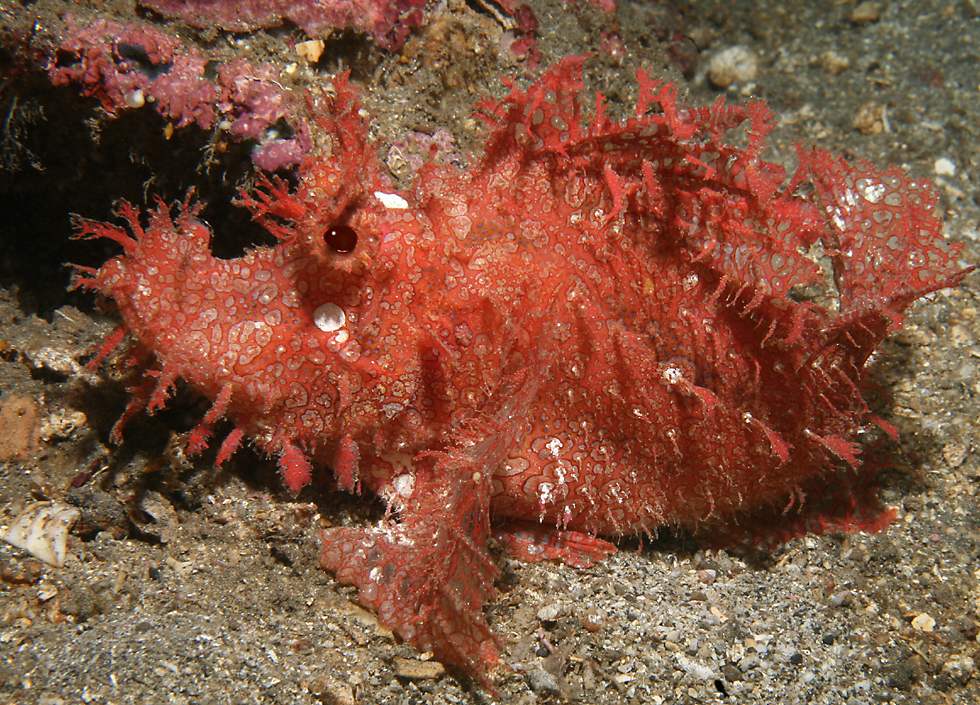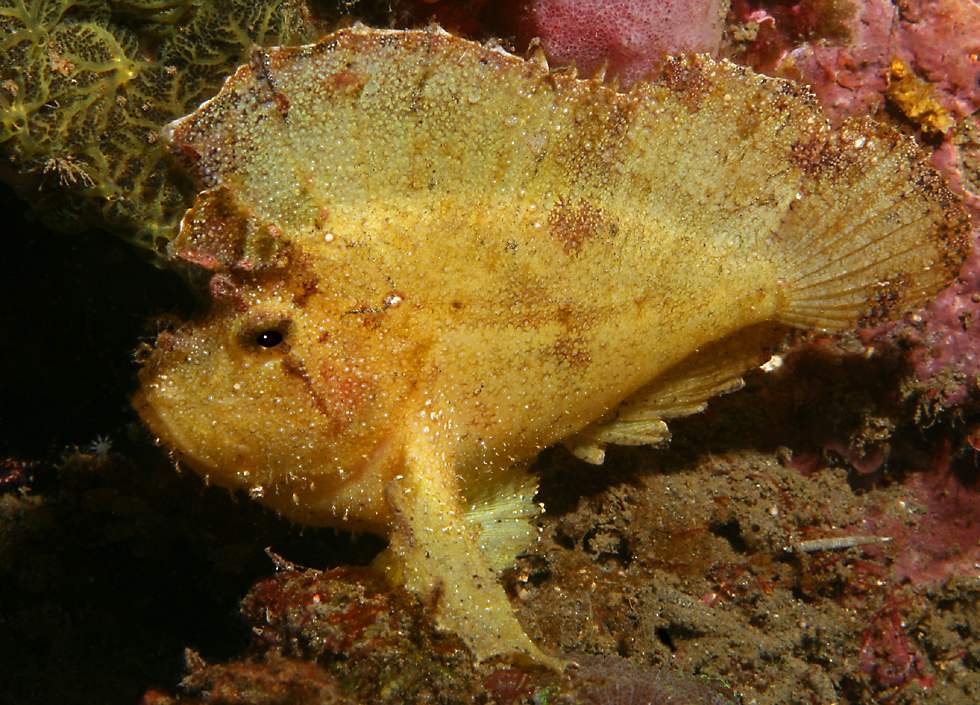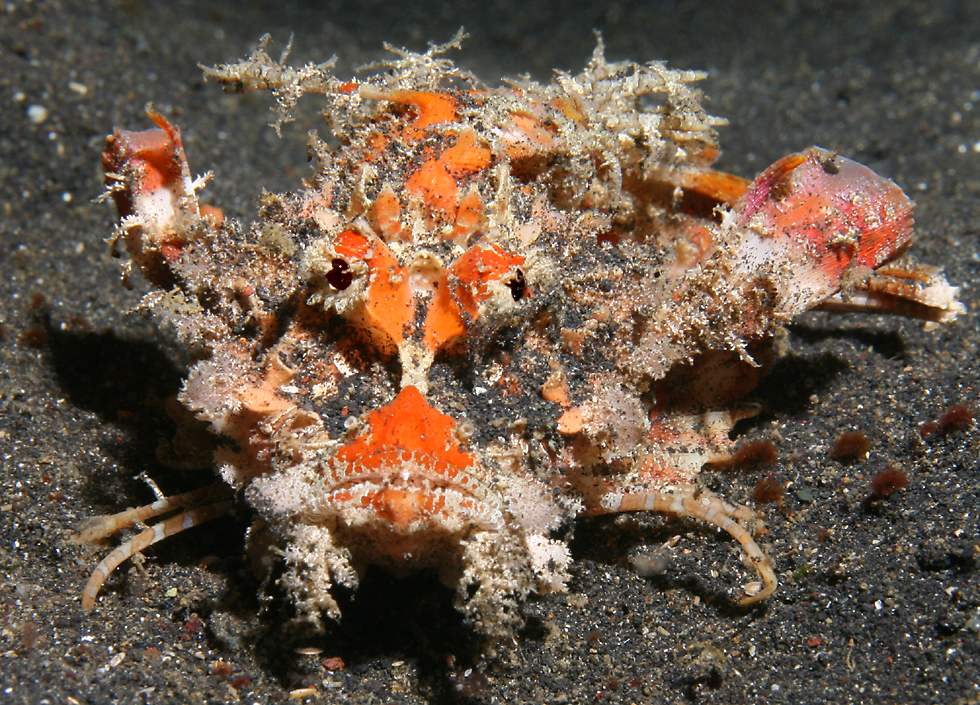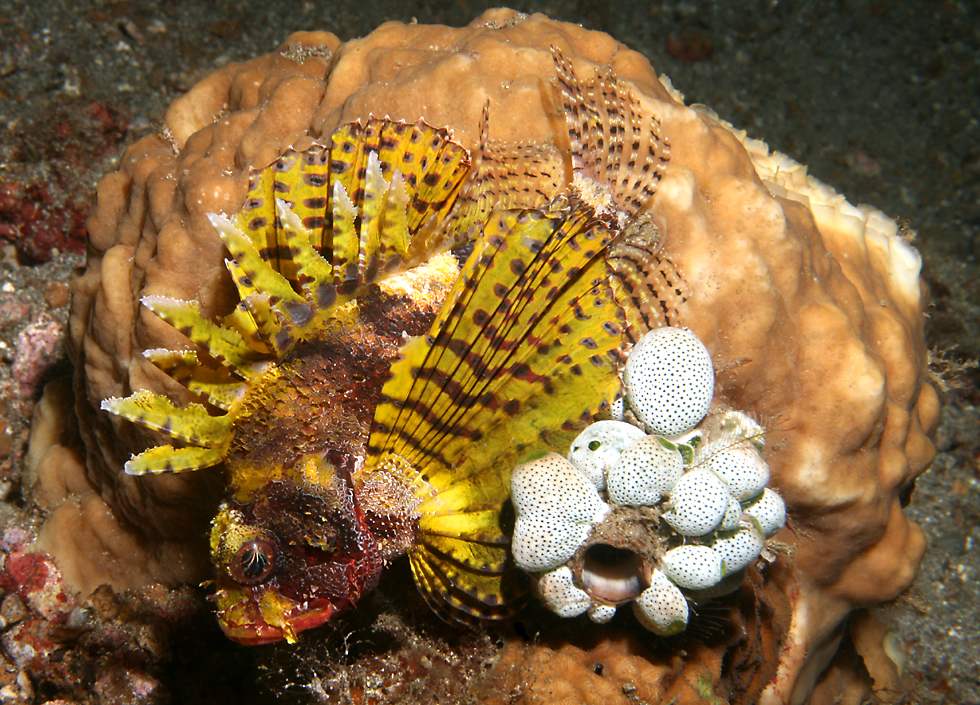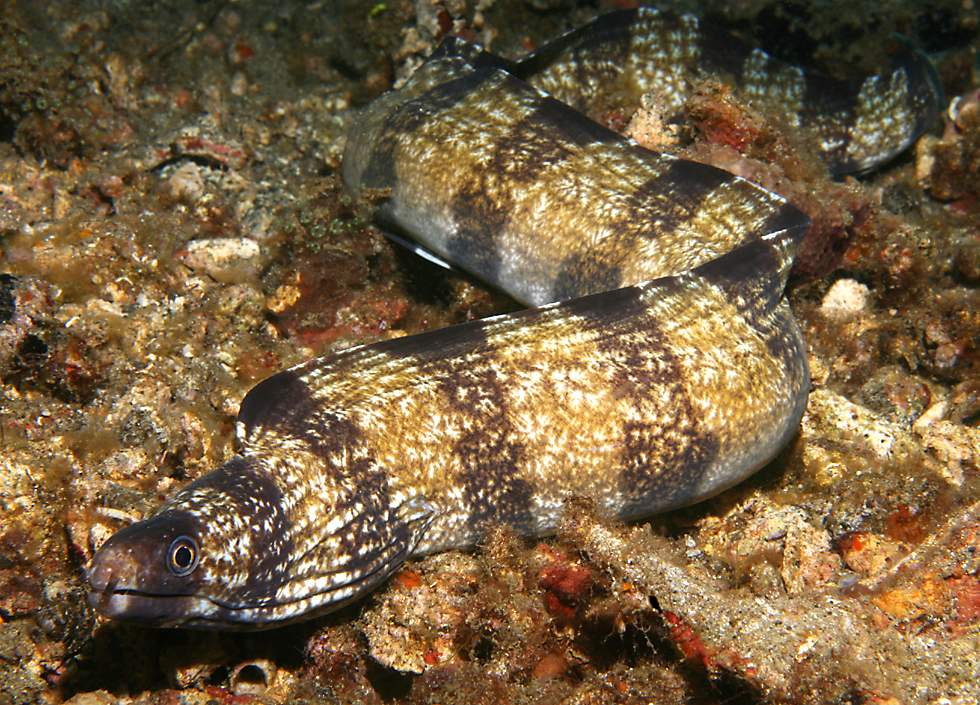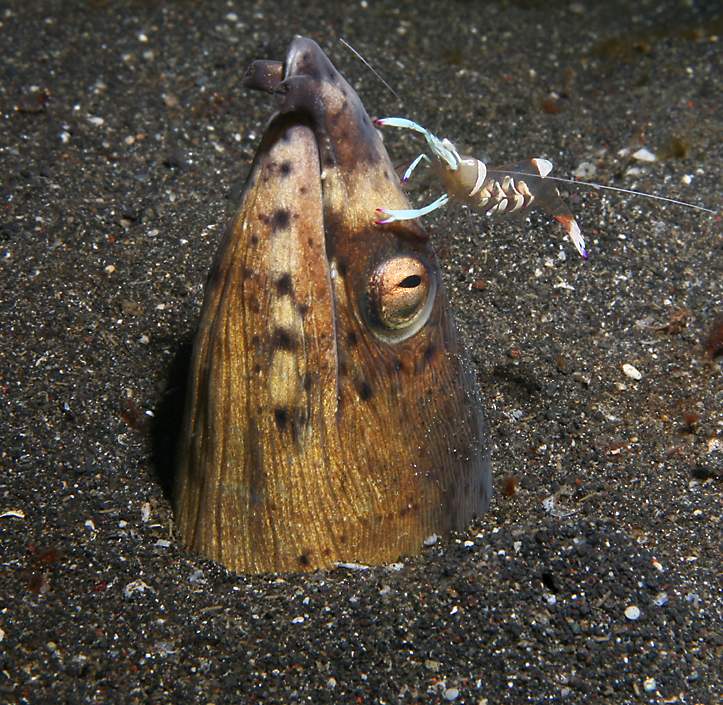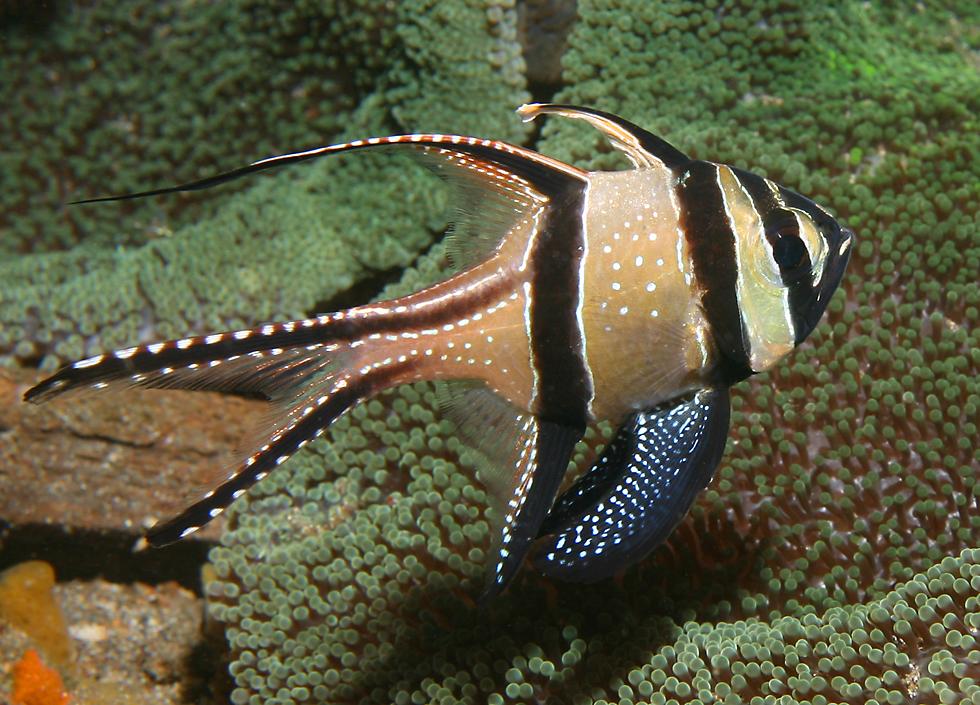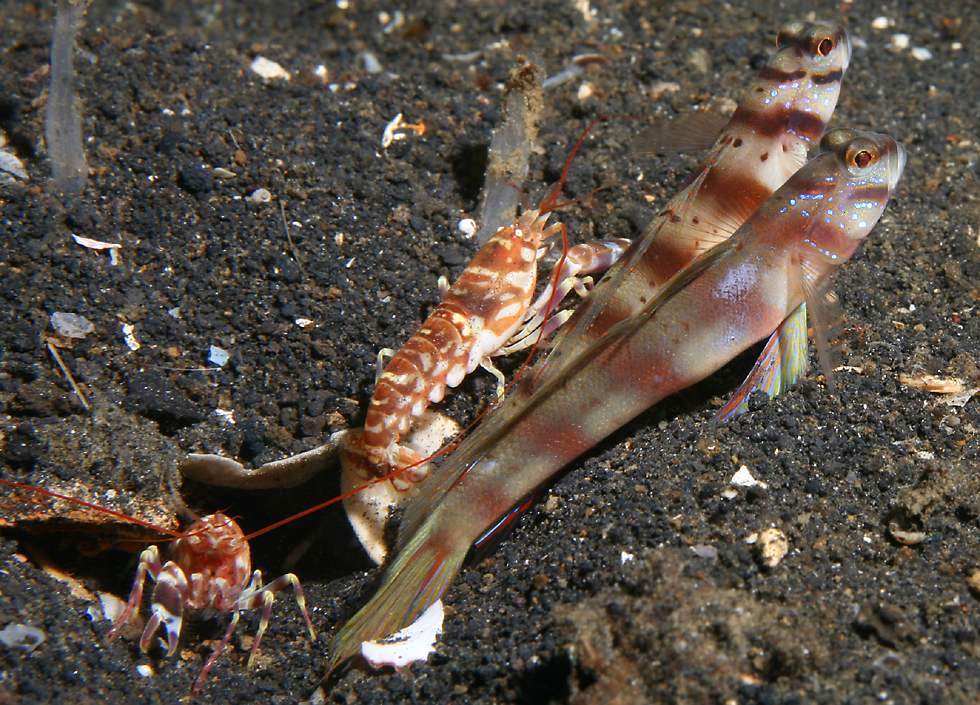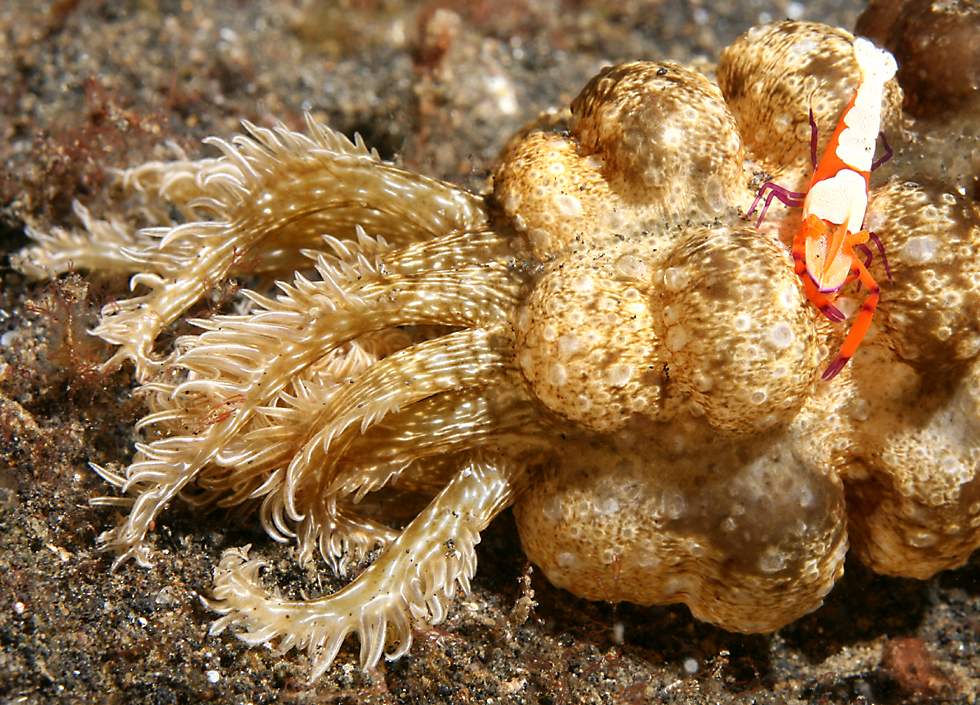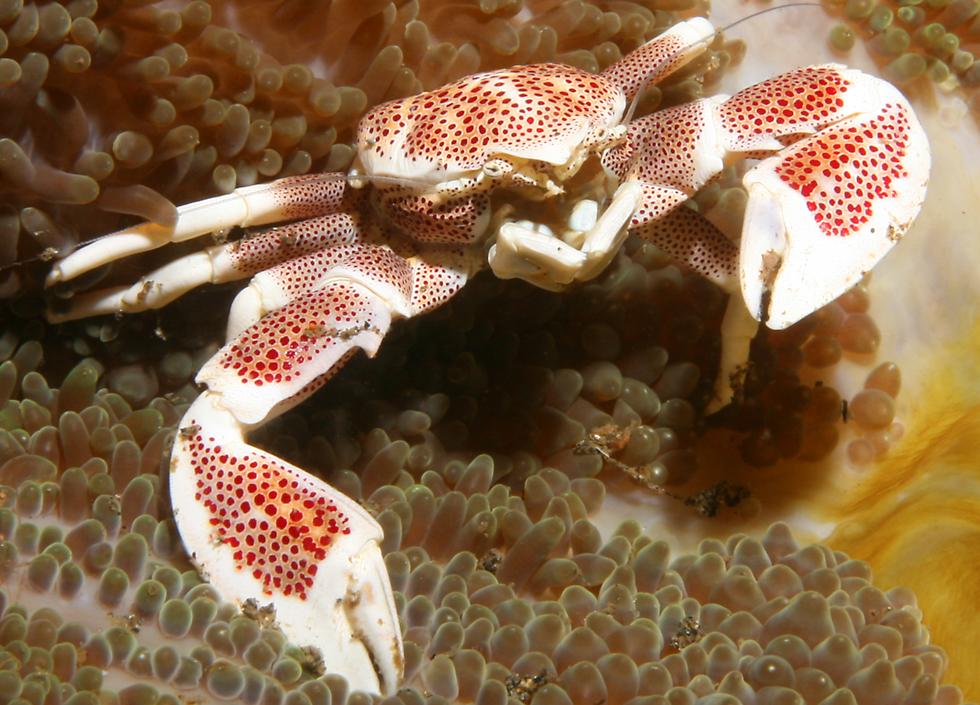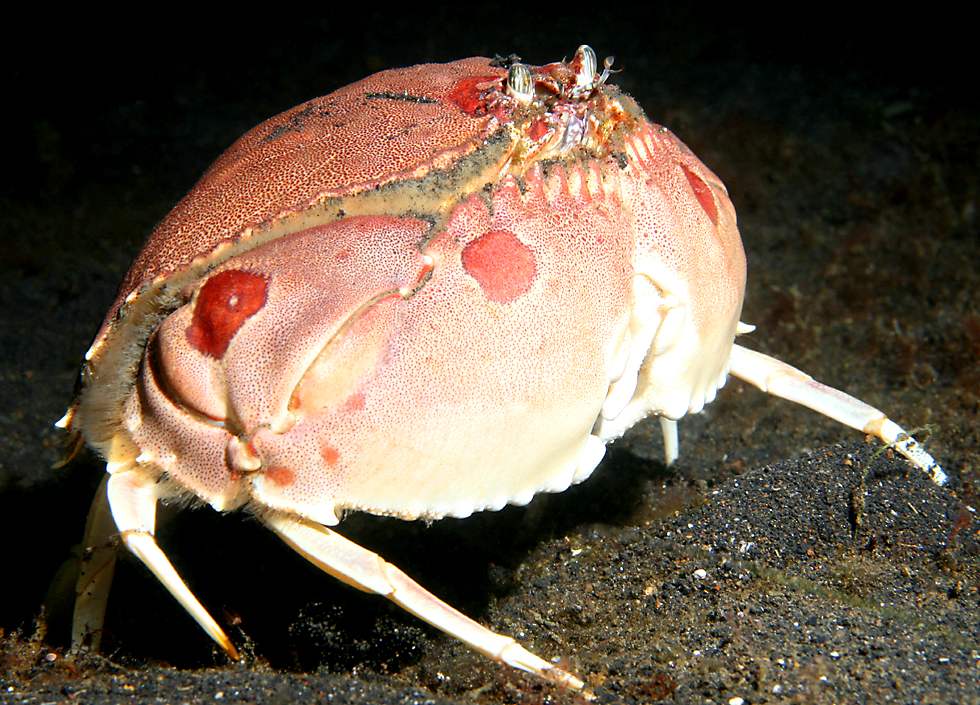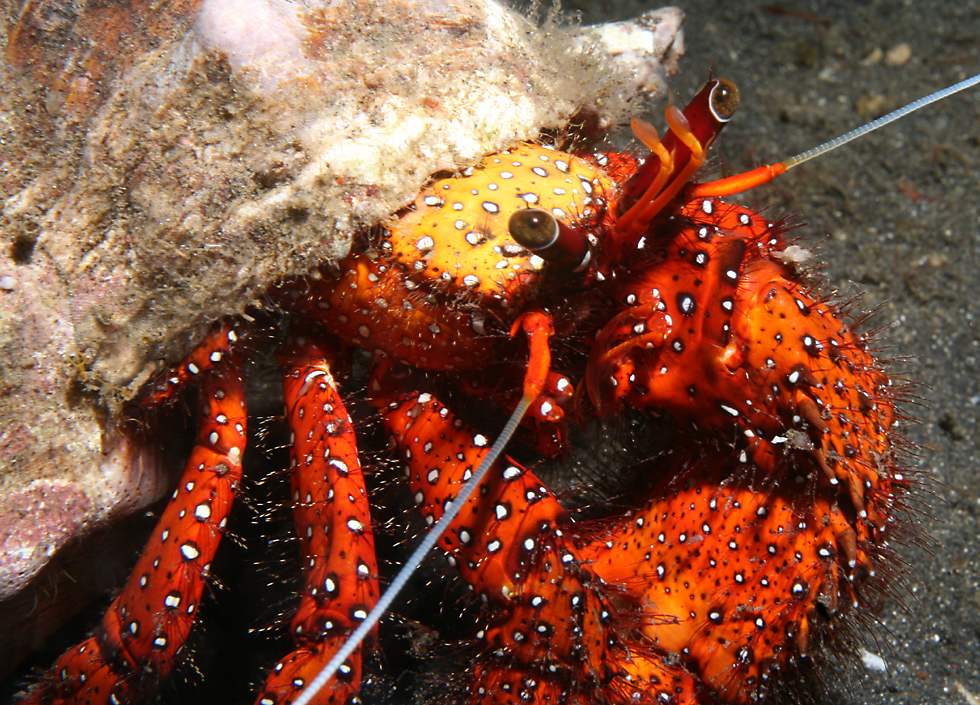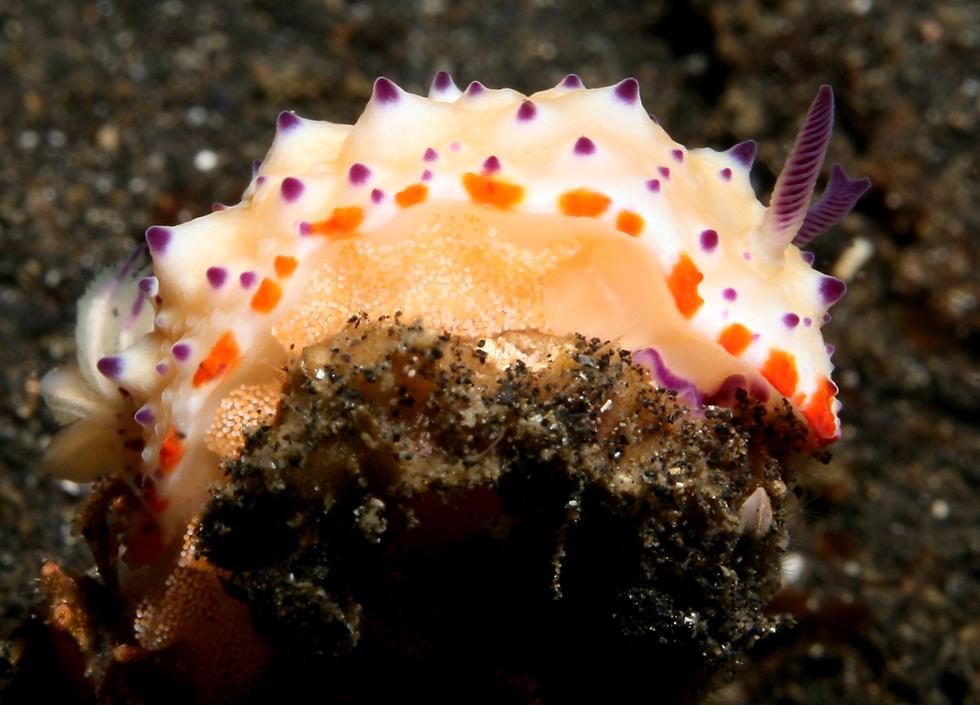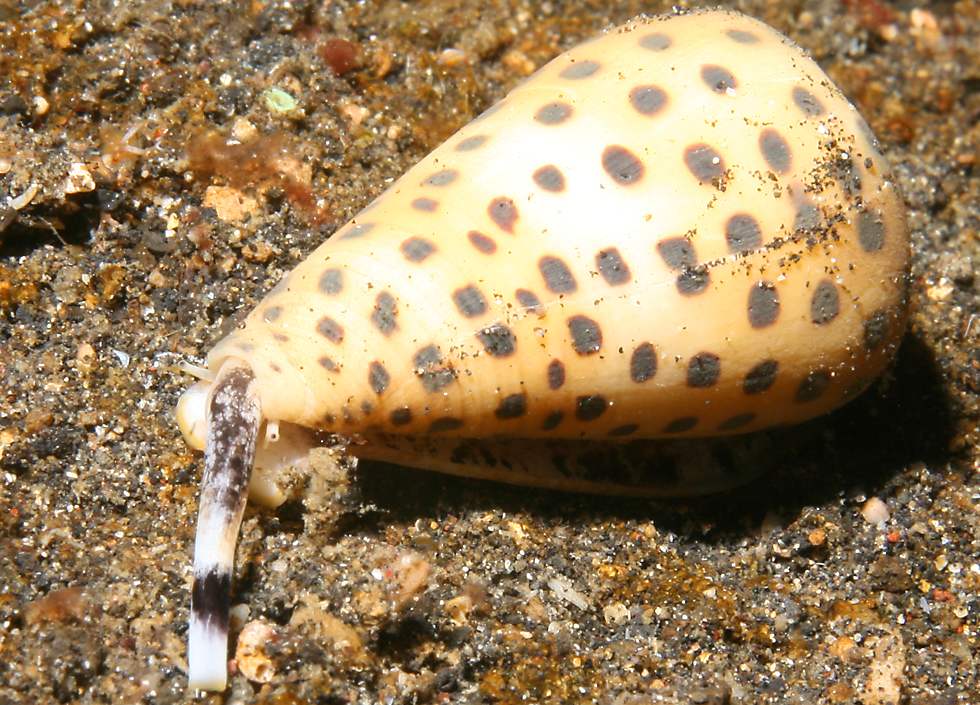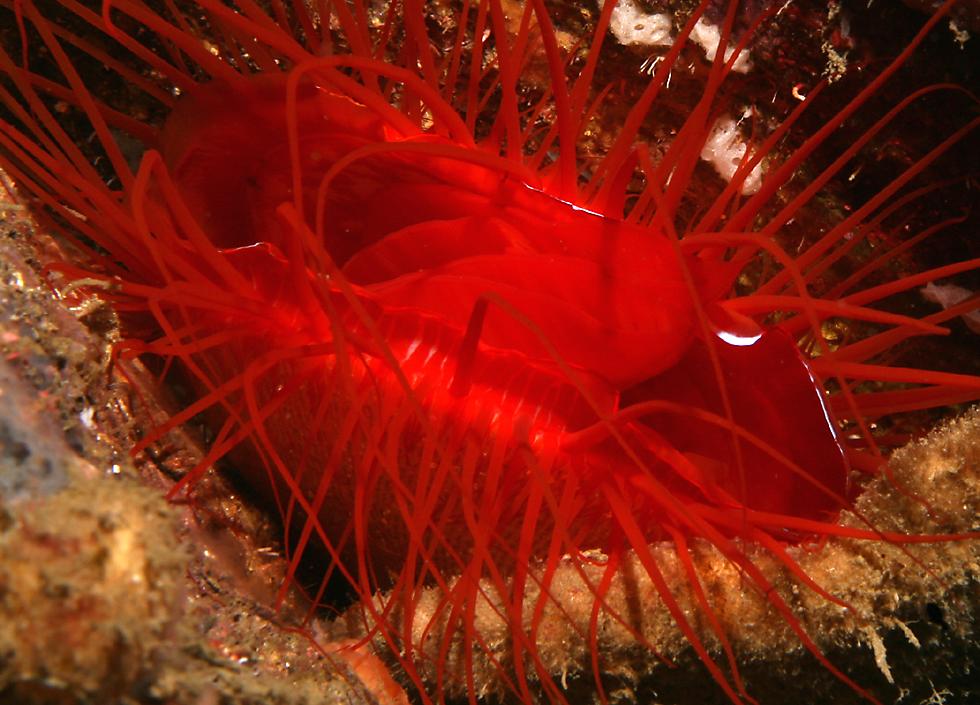Underwater Highlights of Lembeh Strait
|
By any measure, Lembeh Strait in Indonesia is one of the world's great epicenters of weirdness. This striped frogfish is just one of many examples of the strange critters to be found in this stretch of shoreline between the northern coast of Sulawesi and Lembeh Island. The frogfish doesn't do much swimming like a regular fish, instead it walks along on the sea floor. It's an ambush predator, waiting for something tasty to come along, attracted by the lure which you see on top of its head, which is at the end of a little fishing rod which the frogfish twitches around in front of its mouth. |
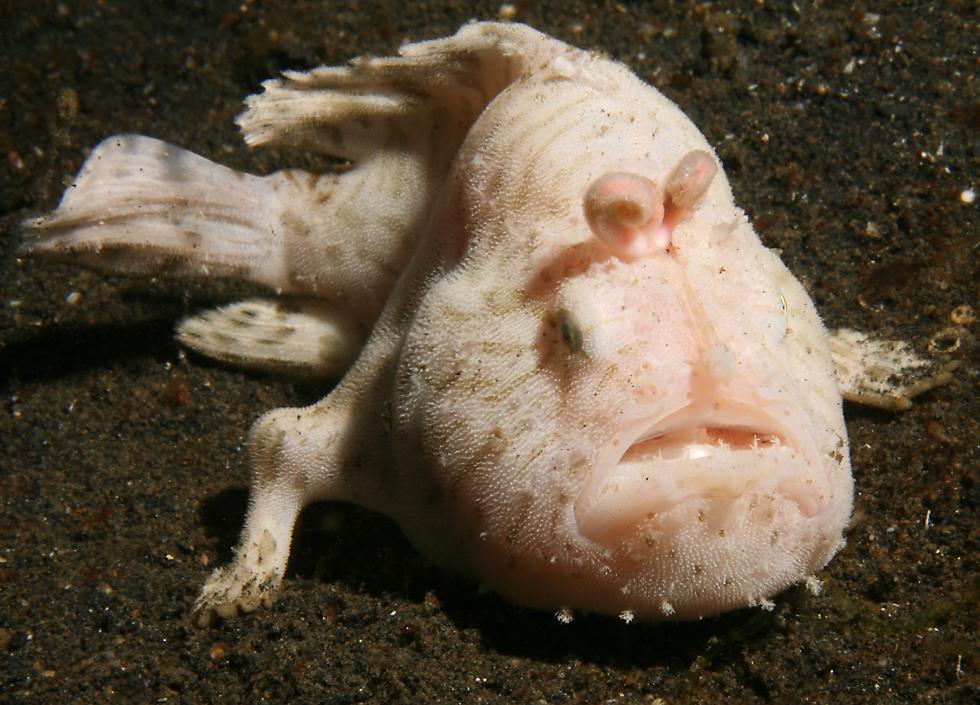
|
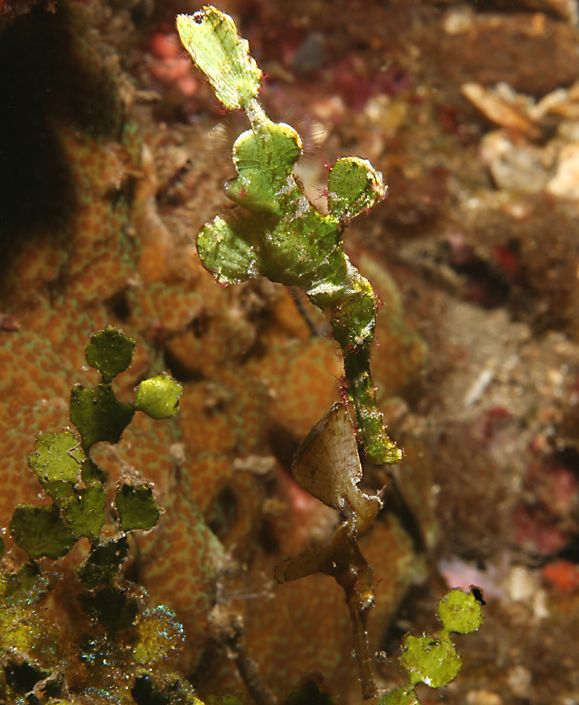
But the grand prize for camouflage goes to the halimeda ghost pipefish, named for the green leafy halimeda algae it lives amongst. This fish has not only matched the color of its surroundings, its lobed fins have even taken on the same shape as the leaves of the algae. They can even change their color to match dead or dying grey leaves and, if you look straight below this green individual then you'll see that its mate is a totally different dull brown hue. These guys are so cryptic and uncommon that they were only scientifically described as recently as 2002. |
|
Even as a child in New Zealand I was familiar with this fish, though in a very different context to this. It's an oriental flying gurnard, which I saw mostly as fillets in the local fish shop, waiting to be dipped in batter and fried. I certainly never saw it like this, crawling along the bottom like so many of the other inhabitants of this place, and flaring its huge pectoral fins when disturbed. |
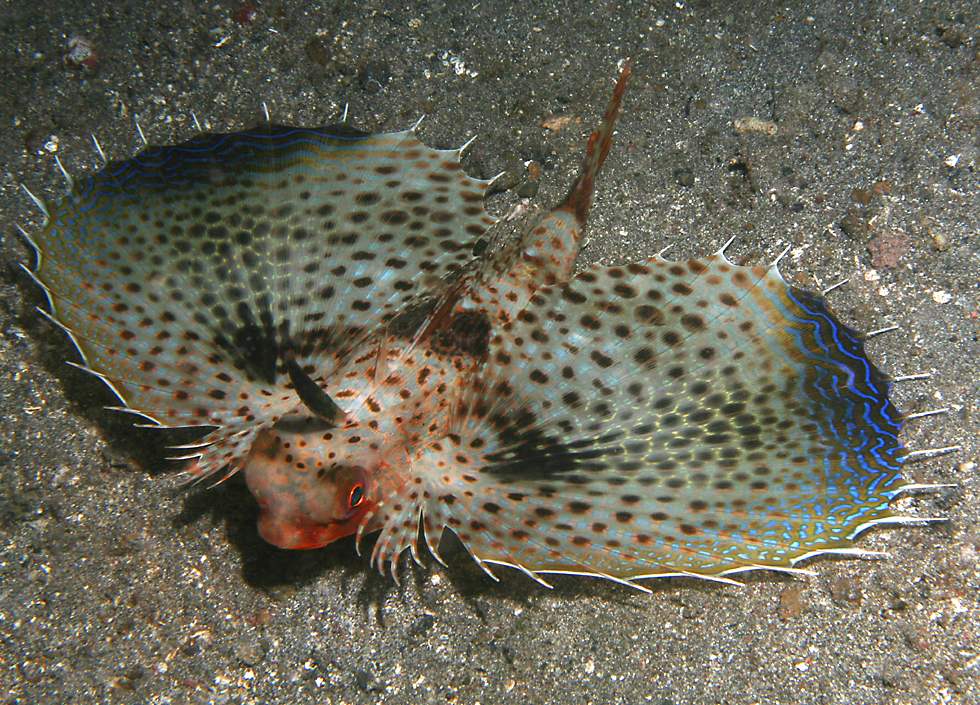
|
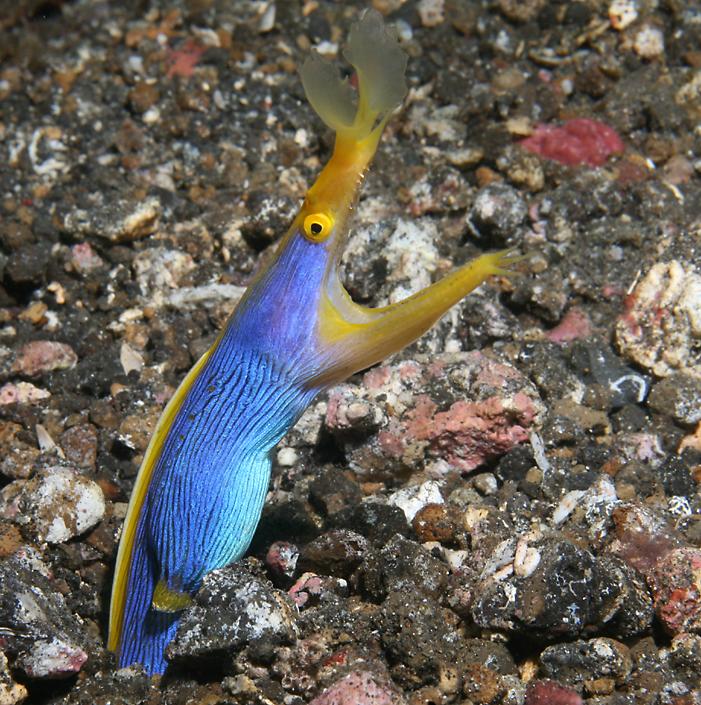
Believe it or not, this cute critter is another moray eel, usually called a ribbon eel, but occasionally called a leaf-nosed moray because of the way the ends of its nostrils flare out. People used to believe that there were three species of ribbon eel, one black, one blue and yellow like this individual, and another which is entirely yellow. After a lot of investigation it was learned that there is only one species, the black ones being juvenile males, the attractive blue and yellow ones being adult males and the yellow ones being females. And no, there are no juvenile female ribbon eels, which begs the question: What the heck??? Here's how it work: when it grows up the juvenile males change color and become adult males and then, when it's sick of that, the adult male abruptly changes sex and becomes female and yellow! It's the only moray eel which pulls this sort of trick, though quite a few other fish like the ever popular clownfish do the same thing. Yes, you heard me right - Nemo's mom was actually a male before Nemo's dad met her and married her! Ribbon eels aren't that rare per se, but for some reason females are very uncommon, so much so that I've never seen one. |
|
Beauty can be found in the strangest places, like the brilliant colors and patterns on this blue-spotted urchin. Pretty to look at, but you'd better not touch it! |

|
